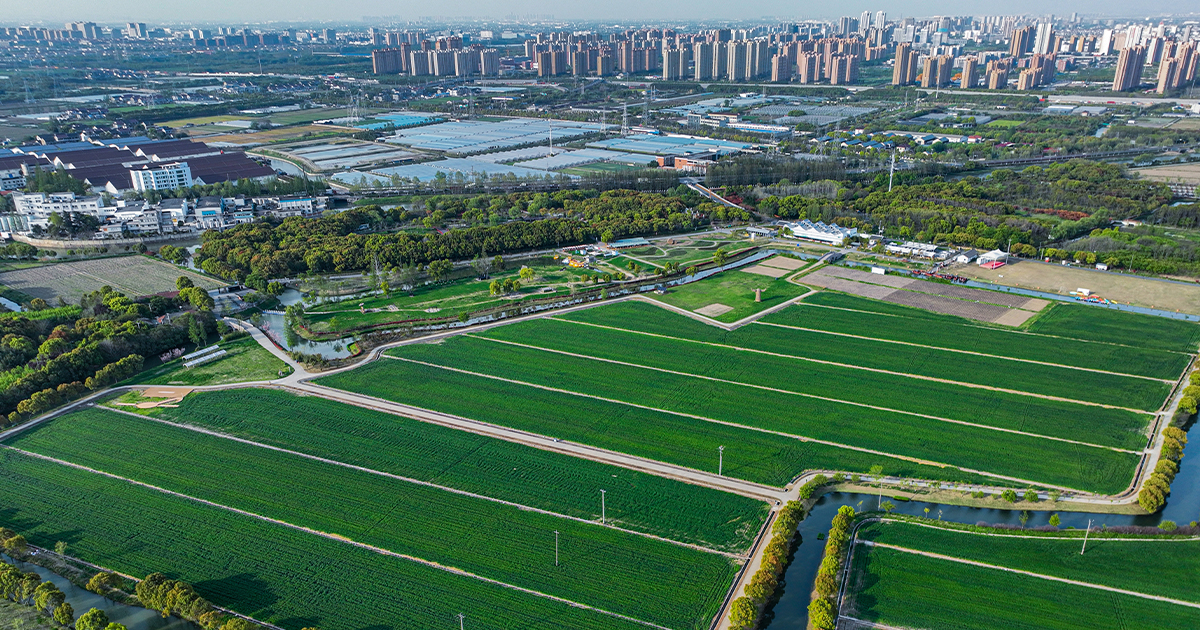Balancing natural growth and urban sprawl: Landscape Restoration of Shanghai Jiabei Country Park | Arcplus-sxadl | World Design Awards 2023
Arcplus-sxadl: Winner of World Design Awards 2023. Jiabei Country Park is located northwest of Jiadingxincheng, Shanghai. It covers an area of about 7,390,000 square meters and is one of Shanghai’s first countryside parks. It is a practice of renovating and restoring an urban green belt core. Jiabei Country Park has greatly improved Shanghai’s ecological network system, creating a city ecological space structure from the network to the surface and anchoring to prevent urban sprawl. Due to the monoculture of species and the deteriorating water quality of the site environment, this area has gradually become a breakpoint in the city. Jiabei Country Park is the closest countryside park to the city center and the most prominent ecological land in the northwest of Shanghai’s ecological network. Therefore, creating a “wild fun” park with multiple industries integrated around the city – Jiabei Country Park- has become an important project for Shanghai’s urban development. From the perspective of biophilia, ecological restoration, and nature conservation, the park has significantly improved the area’s overall water quality and biodiversity. The park balances urban development with the stability of natural ecology and maintains regional ecological balance.
Site Condition
Although the site’s farmland is flat and fertile, with good agricultural production, the single variety of crops has led to insufficient economic development in the industry. The site has a typical rural “stacked forest” landscape mainly consisting of camphor forests. However, the high planting density and single forest structure have resulted in a closed environment with limited activity space. In addition, there are many breaks in the overall revetment. And the geological instability has caused drainage problems and the death of trees due to waterlogging during the rainy season, posing safety hazards and environmental crises. Therefore, the landscape design team hopes to reconnect various functional spaces, manage and restore the site’s water environment, and enrich species diversity to enhance ecological stability.
Design Strategy
The design respects the memory of the site and the value of the original ecological landscape while maximizing the protection and reuse of the existing natural texture and following the principle of minimal intervention in high-quality existing ecological spaces. The plan aims to restore the vital hub of urban green belts while promoting the integration of production and recreation, and creating a livable, workable, and recreational living environment for both urban and rural areas, restoring the “simple and true countryside” living scene.
Integrating the five natural and cultural elements of “fields, forests, water, roads, and courtyards,” a wild landscape style blends agriculture, forestry, grasslands, and wetlands. Starting from the people-oriented concept, the design shapes the countryside space to serve the Shanghai metropolitan area, meeting the growing demand of Shanghai residents for natural and ecological spaces. At the same time, it considers agricultural production and the lives of farmers and adds agricultural parks such as vineyards and flower gardens to promote the economic development of the area, achieving a balanced development of “production, life, and ecology.”
Forest Wild Fun
The landscape design aims to create a spatial forest pattern with points, lines, surfaces, and rings based on the existing forest resources. With moderate development, eco-permeable materials are used for pedestrian walkways to enhance the public’s experience of the forested space and activate the recreational space under the forest canopy. The design restores and creates various forest landscape styles, such as bird habitat forests, ecological conservation forests, and peaceful healing forests, providing recreational activities for the public while ensuring the habitats of local wildlife.
Reconnecting Waterfronts
In the landscape design, biological purification measures and native aquatic plants, such as emergent and submerged plants, are used along the bank boundaries of the artificial irrigation channels and natural ponds. The design effectively purifies water quality at a controllable cost while avoiding the adverse effects of invasive species, maintaining a stable aquatic ecosystem with minimal intervention. The design also softens the bank boundaries with a rich variety of colorful plants, creating a harmonious interplay between the river and the surrounding landscape at different levels. The result is a design that achieves both ecological benefits and a visually stunning water and landscape.
Ecological Restoration
Biophilia: The landscape design team enhances the biodiversity of the site by introducing a variety of deciduous trees, such as the American Red Maple, Yellowwood, Triangle Maple, Ginkgo, Ailanthus, Crape Myrtle, Chinese Parasol Tree, Wintersweet, Osmanthus, and Chinese Fringe Tree, into the existing Camphor forest. In addition, the design introduces fruit trees, such as citrus, persimmon, loquat, Chinese chestnut, and jujube, to provide food sources for birds and enhance the visual experience of visitors. This approach improves the species diversity and ecological stability of the forest ecosystem.
Rewilding: The landscape design team constructs a diversified land system based on the characteristics of the natural ecosystem, including forested ecological areas and wetland conservation areas. Through this approach, the team maximizes the ecological functions of the forest while creating extensive natural wetlands and riparian wetlands, forming a multi-layered habitat from river channels to marshes to forested wetlands. These measures provide spatial support for forming biodiversity, enhancing the site’s overall ecological value.
Regenerative Agriculture: The landscape design team utilizes available farmland to introduce a variety of plants, such as flowers, berries, and wild grasses. In addition to the existing early-maturing rice varieties, such as Minxiangjing and Xiangjing, the team optimizes the crop species, forming a diverse plant community and creating multiple ecological and activity spaces. The design integrates ecological function with agriculture, providing residents and other visitors with various rich spatial experiences. The result is a design that promotes regenerative agriculture, enhancing the site’s ecological value while supporting sustainable production and community well-being.
Cultural Renewal
The bridges in the park serve as essential carriers of Shanghai’s local culture. As a means of inheriting local cultural traditions and preserving site memories, the park’s bridge system includes 18 stone bridges, one rainbow wooden bridge, three folk-style bridges, four bridges honoring local historical figures, seven village culture bridges, and five poetic and picturesque bridges. Visitors can see boats floating on the river beneath the bridges, providing a popular leisure activity for locals. In addition, activities such as straw sculpture exhibitions and harvesting experiences are also held in the fields, centered on five themes: listening, watching, enjoying, playing with, and encountering paddy field rice. These initiatives promote agricultural education and enrich visitors’ understanding of the local culture.
Social Significance
In the context of scarce urban land resources, the landscape design of Jiabei Countryside Park focuses on ecological restoration and nature conservation based on natural and cultural resources. Through low-intervention ecological restoration measures, the park enhances biodiversity, adds greenery, and stabilizes the urban boundary. The design features three scenic roads dominated by Chinese fir, tung tree, and maple trees, creating a colorful leafy landscape that changes with the seasons. This not only enhances the area’s environmental quality but also provides opportunities for outdoor activities such as wilderness training for children, mountain biking, lotus festivals, straw culture festivals, and picking festivals, meeting the growing demand of Shanghai residents for ecological activity space. The park’s nearly 4,500 acres of rice paddies with an expected yield of 450 kilograms per acre and the revenue from ten agricultural specialty gardens have also driven local agricultural production. The project opens up new types of recreation for Shanghai residents and promotes economic development in suburban areas, providing a model and confidence for balancing natural growth and urban expansion.

Project Details
Firm
Arcplus-sxadl
Designer
Zhengqi ZHANG, Jing YUAN, Jiaqi WANG
Project Name
Balancing natural growth and urban sprawl: Landscape Restoration of Shanghai Jiabei Country Park
World Design Awards Category
Landscape Design Built
Project Location
Jiading District, Shanghai
Team
Zhengqi ZHANG, Jing YUAN, Jiaqi WANG, Ming YANG, Hui LAN, Lin JIA, Xiao XU, Qiuhan ZHAO, Xun KONG, Wei ‘an CHEN
Country
China
Photography ©Credit
©Arcplus-sxadl
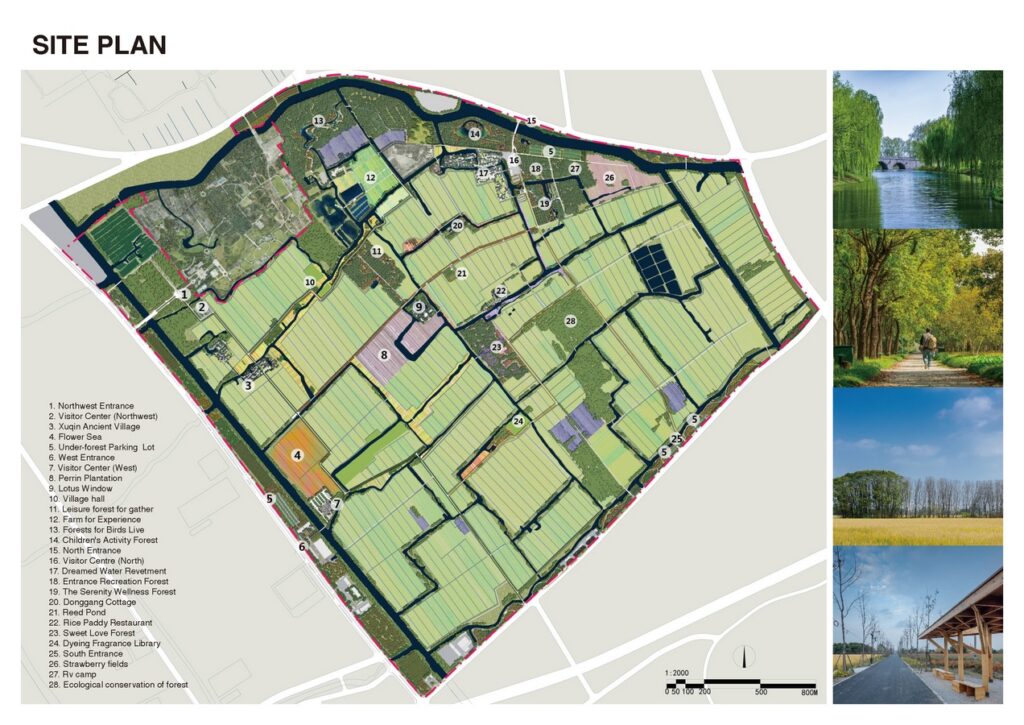
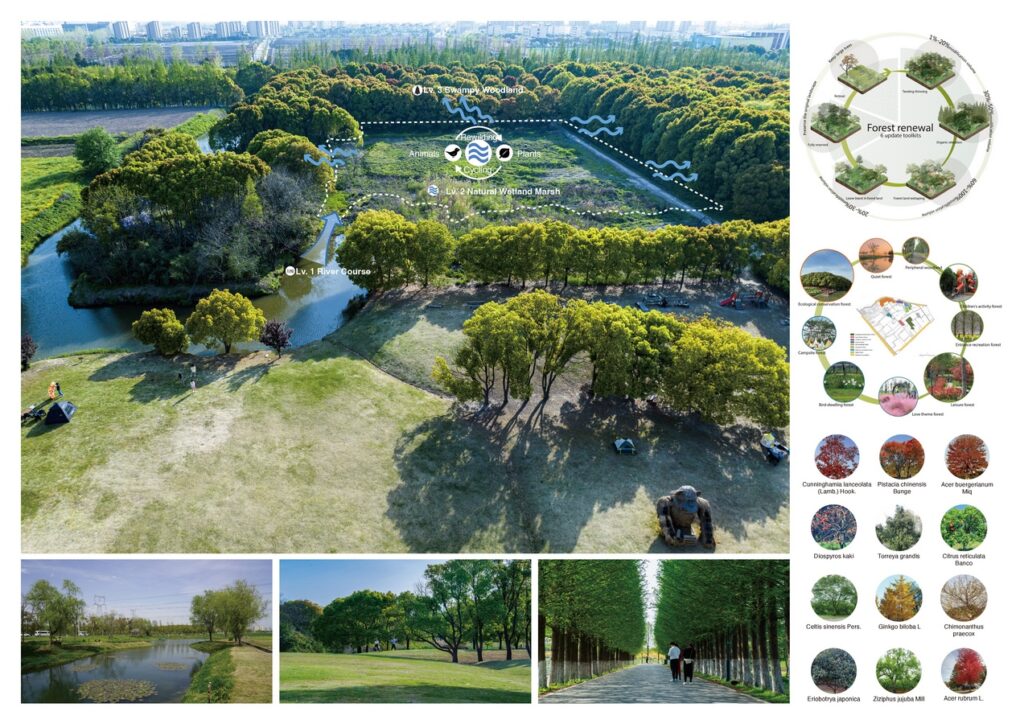
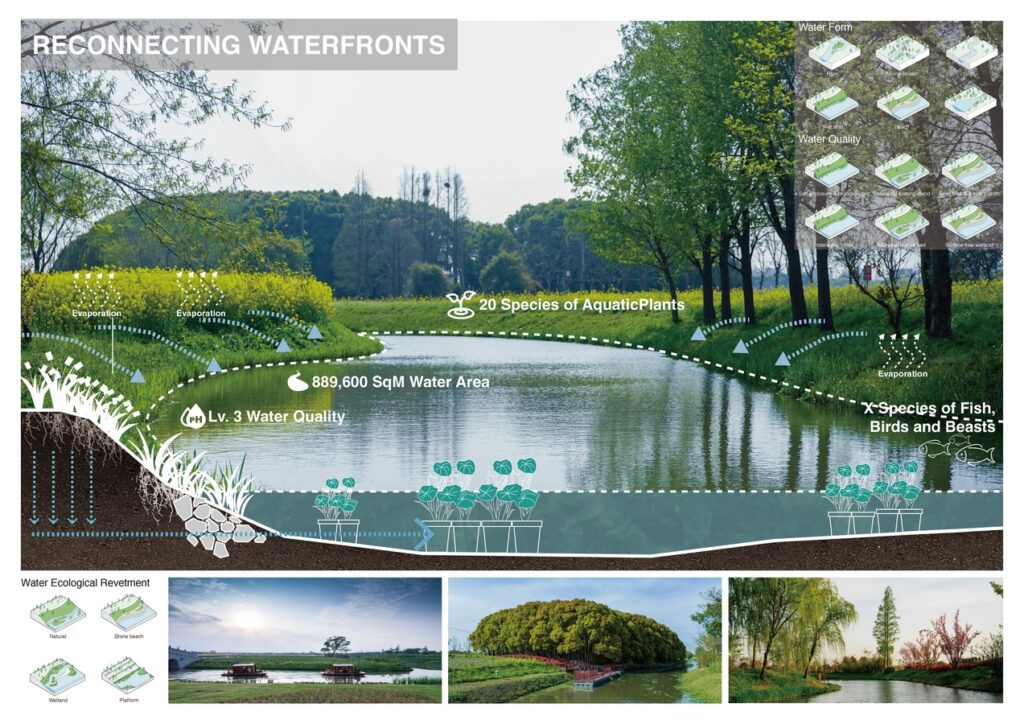
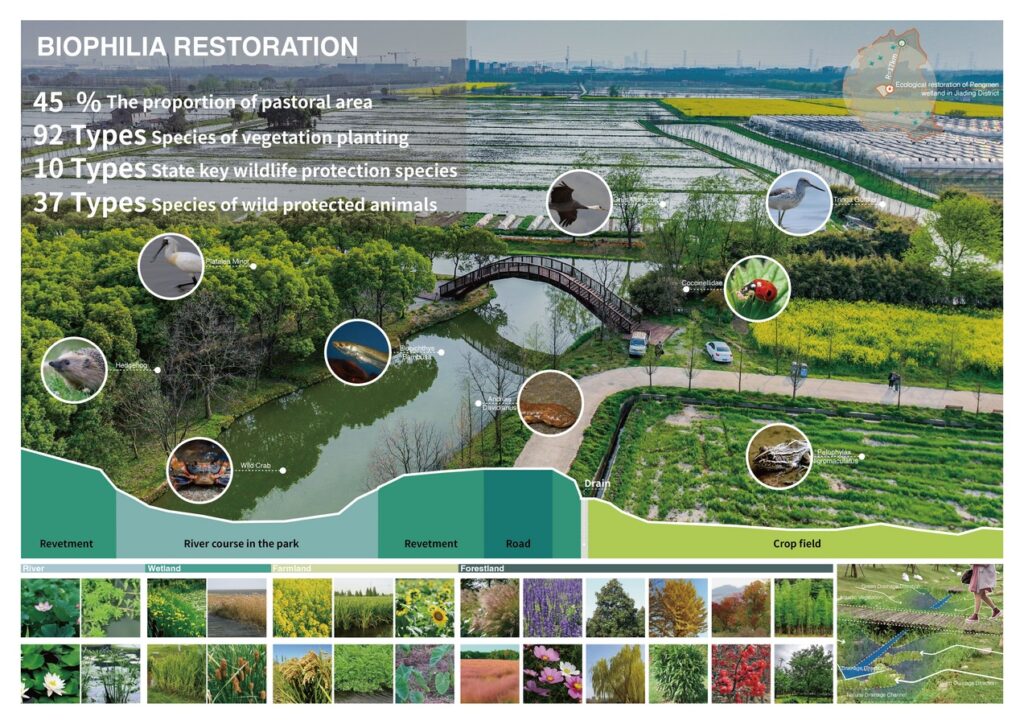
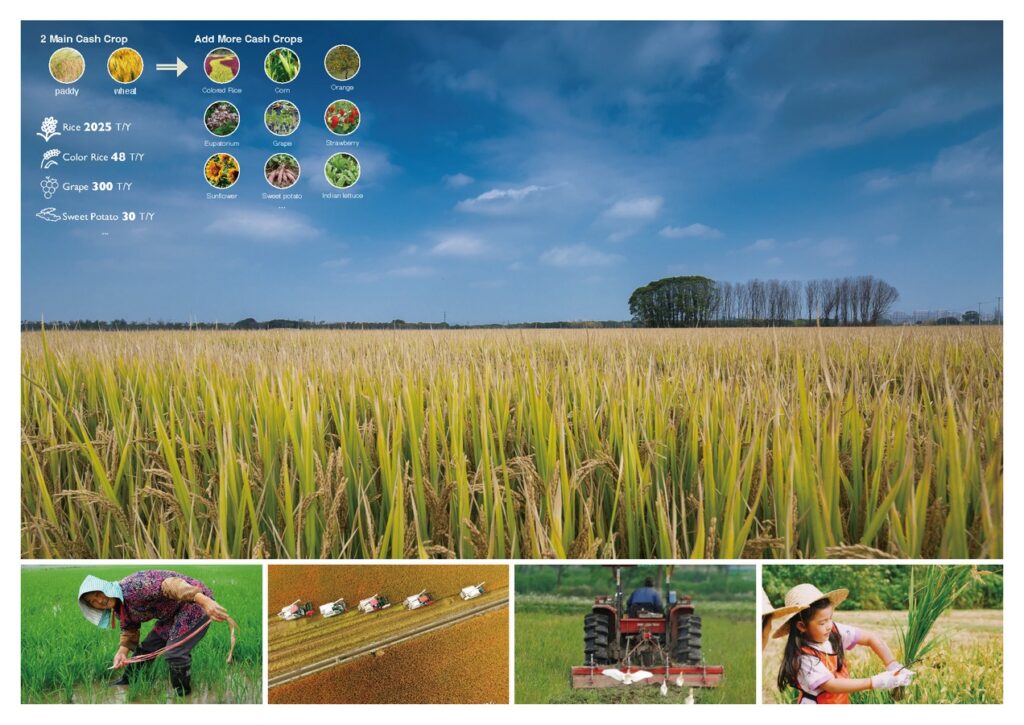
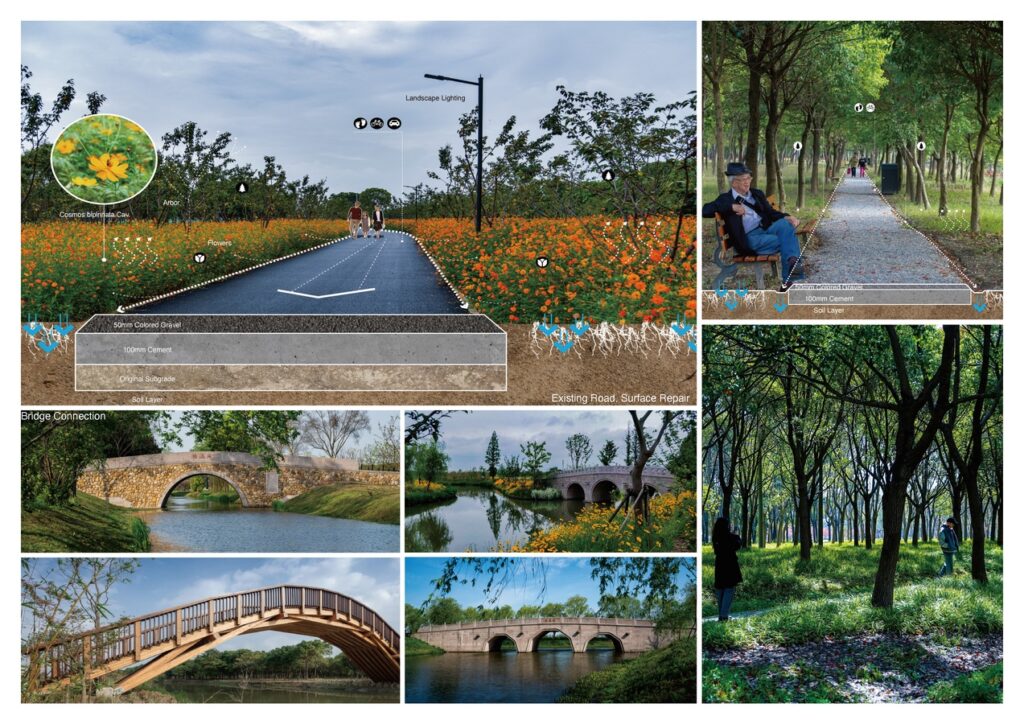
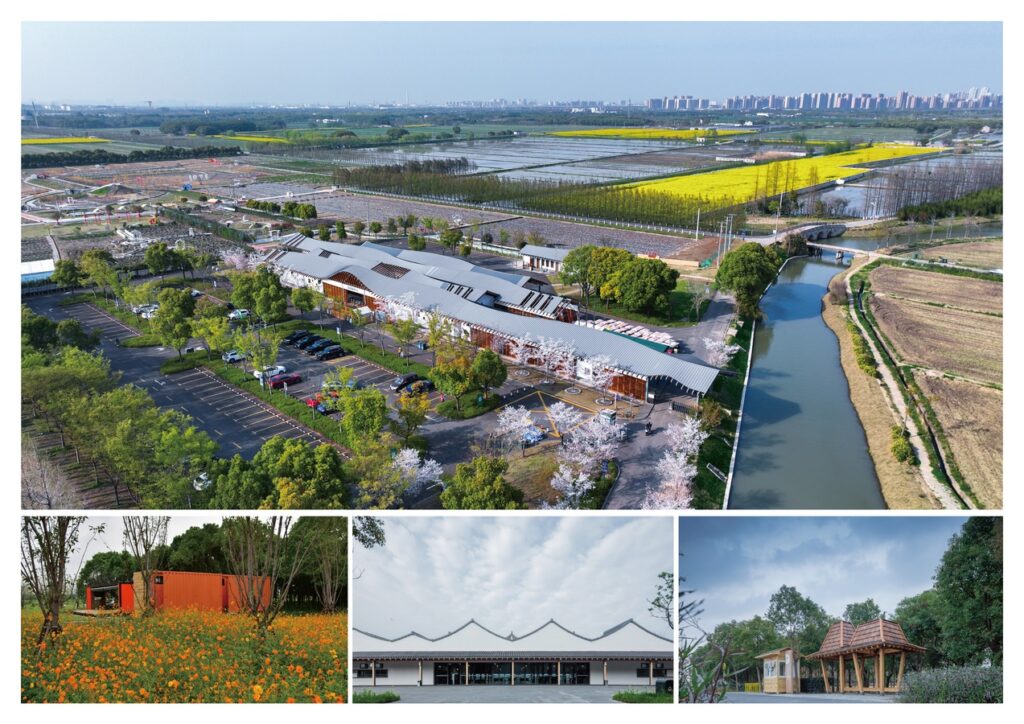
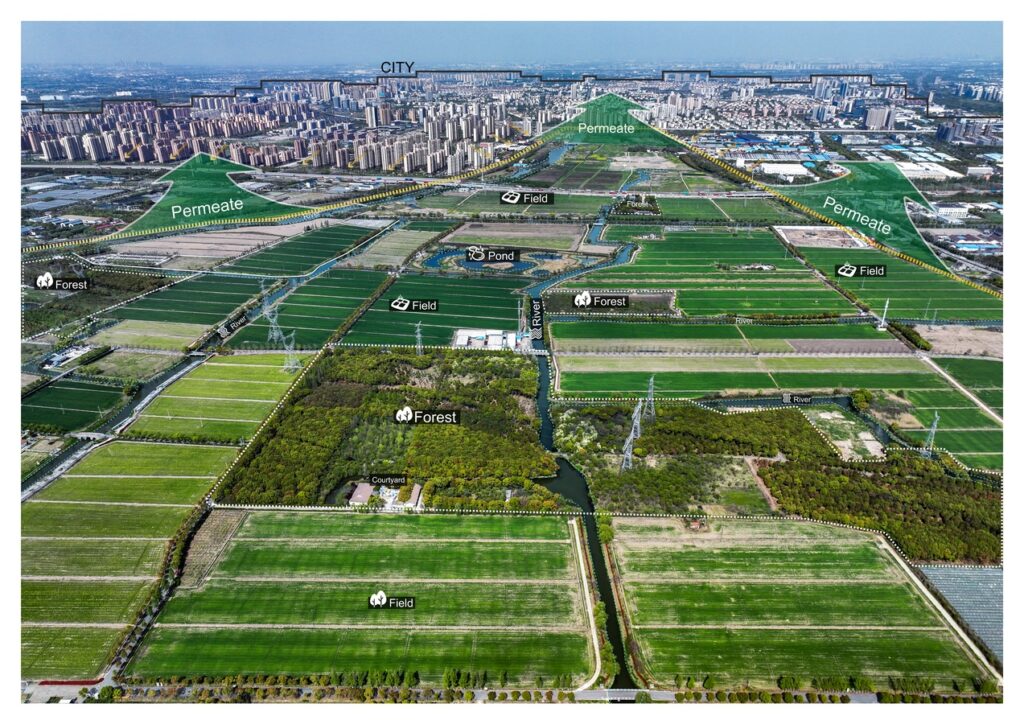

Shanghai Modern Architectural Decoration Environment Design and Research Institute Co., Ltd. is a subsidiary of Arcplus Group PLC, established in 1999, is the first professional enterprise in Shanghai engaged in indoor and outdoor environmental design under the title of “environmental design”. The company has realized the full coverage of indoor and outdoor environment design and upstream and downstream business services of the industrial chain, and has become a leading enterprise in the public space and landscape design industry in East China and even the whole country.



